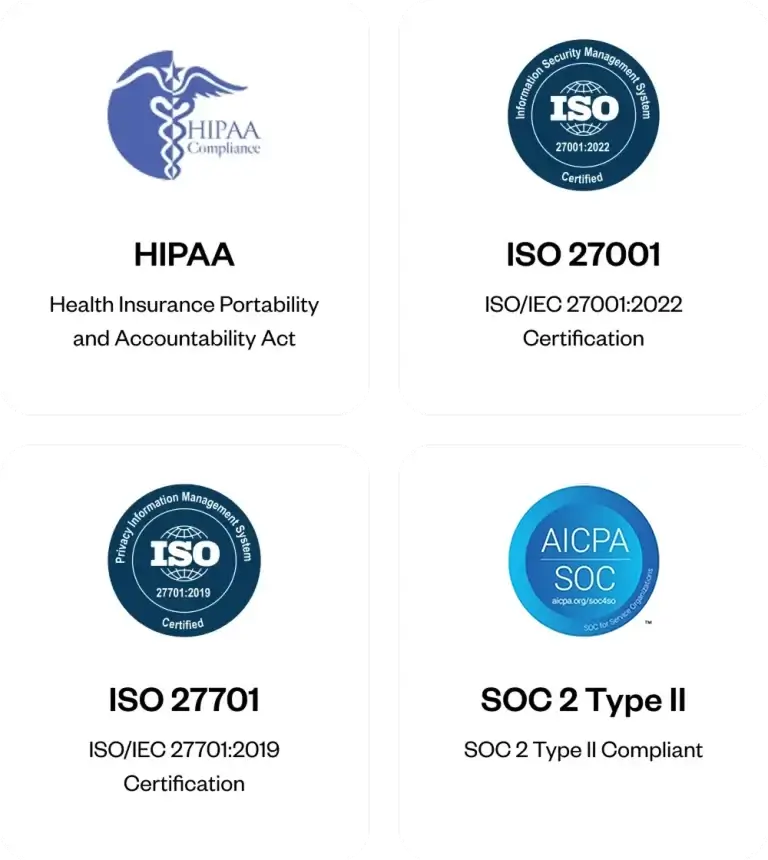It is never too late to plan an omnichannel customer engagement strategy for your organization. So even if you aren’t already in the game of excellent customer engagement, you can start today. Fortunately, you are at the right place to begin the process of understanding and executing a well-planned strategy that benefits your business as well as your customers.
Ideally, customer engagement must be such that customers feel connected with the brand and ultimately portray loyalty without any repulsions. Brands are applying every possible technique to achieve such customer loyalty.
A special birthday discount, a perfectly framed festive giveaway, or even a surprise box of goodies, businesses are massively carrying out operations that can successfully make their customers engage with the brand.
After an extensive study about the subject, we are articulating an all-in-one guide about omnichannel customer engagement.
In this article, you can find the definition, benefits, and tips on improving your customer engagement and overall customer experience.
What is omnichannel customer engagement?
Omnichannel customer engagement is a marketing strategy that enables businesses to interact with customers over multiple channels seamlessly, without missing the context, through an integrated dashboard. By employing a customer engagement automation platform, businesses provide their customers a personalized experience throughout all touchpoints and allow them to switch platforms without losing out on a conversation.
For example, your business provides internet services and has a customer-centric omnichannel customer engagement strategy.
One of your existing customers wants to upgrade their plan and regarding this, they send you a message on your WhatsApp channel. They want to apply a promo code and they send that over Instagram and ask if it is applicable to their requested up-gradation.
Through automation and omnichannel engagement, the customer immediately receives a response. That’s the Gen Z level of engagement.
Today, most businesses have a multichannel presence with a disintegrated communication channel. A multichannel customer engagement strategy has shortcomings and businesses must upgrade it for providing a better customer experience.
Difference between omnichannel and multichannel customer engagement
Research by Gartner shows that 50% of brands have failed to unify the customer engagement channels. This leaves customers annoyed and frustrated as they need to repeatedly convey their issues to different teams over different channels.
A multichannel engagement strategy does not connect or blend the interactions happening over various touchpoints and creates a gap between the business and the customers. To build a bridge and connect the interactions, an omnichannel strategy is a must.
An omnichannel customer engagement strategy will have a great positive impact on customers’ mindsets. If the sales team, support team, and social media management team are on the same page interacting with an agitated customer, they may resolve their issue before sending them marketing collateral.
In a multichannel strategy, businesses can obtain insights into different customer touchpoints. They usually block the overall experience a customer has during their journey with the organization. This problem is solved by using an omnichannel customer engagement strategy. The insights gained through this are precise and can give a detailed perspective about the customer experience.
These differences result in some amazing benefits and improve customer engagement for a business.
Benefits of omnichannel customer engagement strategy
There are a number of benefits of using conversational AI chatbots for businesses. If we unify these and create a well-knit communication channel for customers, the benefits and possibilities multiply and the business excels with its customer engagement. Here are some of the benefits for customer-centric businesses:
1. Consolidated customer information
Marketers are putting efforts into meeting customers’ expectations that they extract from various sources of information. Usually, the data they receive is from individual platforms and does not help in deriving a collaborative view of customers’ perspectives.
With an omnichannel customer engagement platform, businesses become efficient to obtain all the data and extract useful information from all the channels as one. The information so obtained gives the brand insights that are accurate, reliable, and actionable.
Brands can deliver an experience as personalized as simulating a 1:1 human conversation over all channels combined. This differentiating feature can become an exclusivity for your brand for which your customers don’t shift to your competitors.
2. Personalized experience with unified customer profiles
In an omnichannel customer engagement dashboard, each customer has a separate profile under which all of their touchpoints are listed. Be it emails, social media handles, or a customer ID as per their orders. This customer profile provides the business with a detailed understanding of the customers’ relations and history with the company.
Using this information businesses can personalize every interaction and improve the overall customer experience. Providing relevant suggestions and upselling of products becomes easier and more personalized with all the insights. Customers love attention and can buy products if they are relevant to their choices and buying habits.
3. Detailed customer segmentation
Segmentation is essential for delivering personalized customer engagement. It can be easily achieved with the omnichannel approach of collecting data and analyzing it.
Customer segmentation can be done either on the basis of demographics or as per customer choices, buying patterns, and frequency. As per your business needs, you can create different sections and sub-sections of the list of your consumers and engage with them.
Omnichannel customer engagement platform with artificial intelligence assists businesses in segmentation as per their needs. It can segment audiences for different business operations based on customers’ journey, from awareness to delight phase.
4. Better customer insights
Every marketer knows the value of accurate and deep insights. All the strategies and campaigns are created by looking at previous information available. But what if the information collected is partially correct?
For detailed insights, an omnichannel platform is important, as it provides a unified set of statistics about your product, service, and customer experience. By deploying it, businesses will get a clear picture of their shortcomings and understand the scope of improvement.
Brands can easily observe the reasons behind high cart abandonment or bounce rate. They can understand in which phase of the customers’ journey do they have the most annoyed customers and can instantly work on improvements.
5. Improved shopping experience
Customers need an unparalleled shopping experience to stick to your brand. Precise product recommendations, personalized discount coupons, subscription reminders, and a complete understanding of customers’ buying habits and patterns are a few basic needs for a business to stand out from the competition.
With historical data and artificial intelligence, businesses can provide a better shopping experience to customers and make sure that they are not disappointed with the experience. If a business presents the exact product a customer is looking for, why will he/she not buy it.
Providing such a shopping experience can help businesses increase their sales and understand the areas that need improvement in terms of customer satisfaction.
6. Real-time omnichannel customer engagement
Customer engagement that is real-time and distributed over all customer touchpoints can make customers feel actively involved with your offerings. Delivering a customer engagement that is fast and personalized is an issue many organizations are facing.
An omnichannel customer engagement platform can help in providing real-time responses to customers. This builds a trusting relationship between the customer and the business and pushes customers further in the sales funnel.
With real-time engagement, businesses can reduce their waiting tickets and also be with the customers throughout their journey so as to obtain a better understanding. Businesses can observe the reasons why customers are bouncing off or abandoning their shopping carts.
7. Improved customer retention and customer loyalty
Customers love when businesses spend enough time and money for delivering a better experience. They tend to return to the brands that value their customers and follow a customer-centric approach to customer engagement.
Customers feel responsible for the brand and become loyal when they are approached from all channels. As they get this feeling of responsibility they automatically convert into business’s brand ambassadors and help them with word-of-mouth marketing.
Businesses need to work on customer experience if they want their customers to return. Customer loyalty comes with a price, that is a well-planned customer engagement.
If your business already uses conversational AI on multiple platforms and is looking to improve customer engagement, the following are some tips to increase your omnichannel customer engagement.
Get better at omnichannel customer engagement
Here are 5 tips that can help you get better results from all your efforts in customer engagement.
1. Analyze which channel gets maximum engagement
Customers have channel preferences and businesses must respect that. If your business has a maximum open rate of WhatsApp messages, use that tool intensively. Fabricating a good combination of all the channels and using them wisely is advised.
This strategy is cost-effective for companies as businesses can leverage channels with high engagement rates and low costs to reach out to their customers. Instead of communicating over lengthy emails, brands can automate messages over low-cost channels like live chat and save company resources to a great extent.
2. Minimize average response time
To improve your customer engagement you need to make sure that your customers are heard. With an omnichannel strategy, you have opened gates for your customers to interact with you but what will happen if the response time from your end is high.
Average response times for all the platforms are different and businesses must make sure that their response time is lower than the average response time. All platforms display a tentative response time and it is crucial that brands keep it as low as possible.
With conversational AI and automation, an instant response can be provided to the customers, but in the case of human interaction, it should be minimized.
3. Use data to provide contextual conversations
Centralizing data collected from each and every customer interaction can give brands a clear picture of all the needs and requirements of customers. This can become a task with multiple platforms for customer engagement and multiple teams handling them. Fragmented data can lead to false insights and can mislead brands.
Contextual conversations over all channels can be achieved by recording all interactions of a customer along a timeline. Analyzing this data and understanding customers’ sentiments towards your brand, communications can be taken forward.
4. Gather feedback from customers
Businesses must never miss out on an opportunity of collecting customer feedback. You never know what insight can be obtained from any of your customers’ suggestions. For best results and precise scores, it is always suggested to collect feedback instantly after a customer engagement.
Customer survey forms, ratings, reviews and any other form of feedback that suits your business needs must be gathered from customers. With omnichannel customer engagement, maintaining a good relationship with your customers can be difficult, but at the same time, collecting feedback can be easier.
5. Observe and analyze customer engagement over all channels
With different customer engagement channels, it becomes difficult to keep track of all the metrics and KPIs of customer engagement. However, it is of utmost importance to measure the performance of each channel to understand which channels customers really to engage with and which channels need to be improved.
Some of the basic metrics that must be measured include the number of conversations, social media engagement- likes, shares, comments, subscribers, click-through rates and website traffic.
Depending on the channels that you use for customer engagement, you can select the metrics best suited for your business needs.
Enhance your omnichannel customer engagement strategy with Yellow.ai. Leverage artificial intelligence and NLP to build a powerful unified platform that takes care of overall engagement and provides detailed insights for your business.
Make your customers feel valued with unparalleled customer engagement on all channels. Yellow.ai- a market leader in conversational marketing can upgrade your business with its excellent CX solutions available for all businesses.
Are you ready to use an omnichannel customer engagement strategy to provide your customers with a delightful experience across all channels? Schedule a demo with our subject matter experts and understand the capabilities of CX automation in your business






















